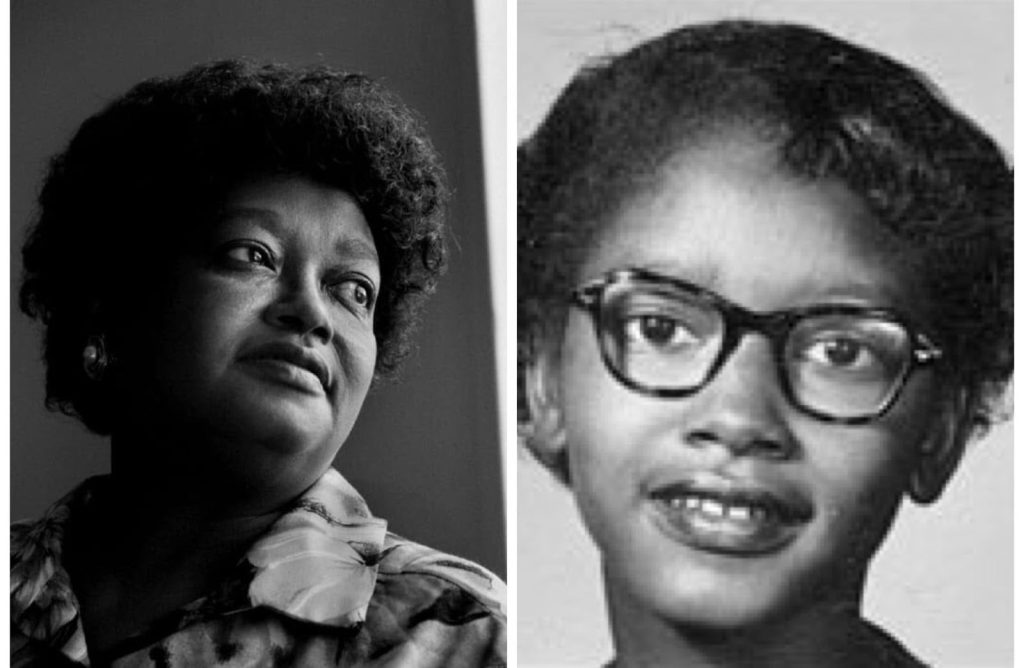Give her all the roses!
In honor of Claudette Colvin Day, here is the story of the teen who pioneered the Civil Rights Movement.
Claudette Colvin was born September 1939 in Pine Level, Alabama, moving to Montgomery at the age of 8, Biography.com reports. Colvin was impacted at a young age by the racial injustices of the time. She was angered by the case of Jeremiah Reeves, an older classmate of hers who was indicted in 1952 for allegedly raping a white woman and later executed by the state. She put her pain into action eventually joining the NAACP Youth Council, seeking to make a difference from the inside out.
At 15-years-old, Colvin would inadvertently make history, becoming the catalyst for the Civil Rights Movement. On March 2, 1955, Colvin left school to ride the bus home as she usually did. When the driver ordered Colvin and her classmates to get up from a row of seats to accommodate a white woman, Colvin’s classmates obliged, but she did not.
Now 81, the pioneer recently reflected upon that time, recalling that they were fresh out of “Negro History Month.” While At school, she’d been learning about Freedom Fighters like Underground Railroad leader Harriet Tubman and women’s rights activist Sojourner Truth. The entire month students at school had been discussing racial injustices, and on that day, Colvin was experiencing one that was all too familiar.
“All I remember is that I was not going to walk off the bus voluntarily. We couldn’t try on clothes. You had to take a brown paper bag, draw a diagram of your foot, and take it to the store. Can you imagine all of that in my mind? My head was just too full of Black history, you know, the oppression that we went through. It felt like Sojourner Truth was on one side pushing me down, and Harriet Tubman was on the other side of me pushing me down. I couldn’t get up,” Colvin previously told NPR.
Eventually, officers threw 15-year-old Colvin off the bus, berating her, handcuffing her, and taking her to jail. The reality didn’t set in until the teen was in her cell, and she began praying and crying until her mother and family pastor came to bail her out a while later. The teen’s arrest caught the interest of local Black leaders who considered using Colvin as the catalyst for a city-wide bus boycott. Ultimately, they decided against it, feeling like Colvin was too young, too “emotional,” and not the “right” person to represent the movement. Leaders opted instead to assist her with legal representation.
Nine months later, NAACP secretary Rosa Parks was arrested in the same city, on the same bus system, for doing the same thing, refusing to give her seat up to a white person. Parks would be the “right” person in Black leaders’ eyes to represent the movement, becoming the face of the Montgomery bus boycott and prompting the rise of Dr. Martin Luther King Jr.
Colvin would later get pregnant that summer, which caused the local community leaders to turn their backs on her. She then received intense backlash for her actions and became known as a troublemaker in the community. In 1956, Colvin became a plaintiff alongside Aurelia Browder, Susie McDonald, and Mary Louise Smith in Browder v. Gayle. This landmark case desegregated buses in Montgomery and across the state of Alabama. Colvin would eventually move to New York, deciding to stay permanently after Dr. King’s assassination in 1968.
In the north, people were focused on Malcolm X and the Black Power movement with little to no regard for integration. Colvin’s story was lost in the shadows, and she worked as a nurse until her retirement in 2004, her history unknown by neighbors and co-workers. In 1990, New York Governor Mario Cuomo awarded Colvin with the Martin Luther King Jr. Medal of Freedom. In 2009, Phillip Hoose penned the full story of Colvin’s life in Claudette Colvin: Twice Toward Justice, which was awarded a National Book Award.
David Garrow, historian and author of Bearing the Cross: Martin Luther King Jr. and the Southern Christian Leadership Conference, spoke about the importance of refocusing the civil rights narrative on people like Colvin and telling their stories, saying, “the real reality of the movement was often young people and often more than 50 percent women.”
Colvin has since said she understands the politics that played into Parks becoming the face of the movement, although she believes more attention should be given to the case of Browder v. Gayle. March 2nd is the official “Claudette Colvin Day” in Montgomery, Alabama, acknowledging the icon for her service and her sacrifice.
Thank you, Ms. Colvin, for all that you’ve done. A million thanks are never enough. Because of you, we can!
Photos Courtesy of Dudley M. Brooks/The Washington Post/Alean Bowser/NPR

